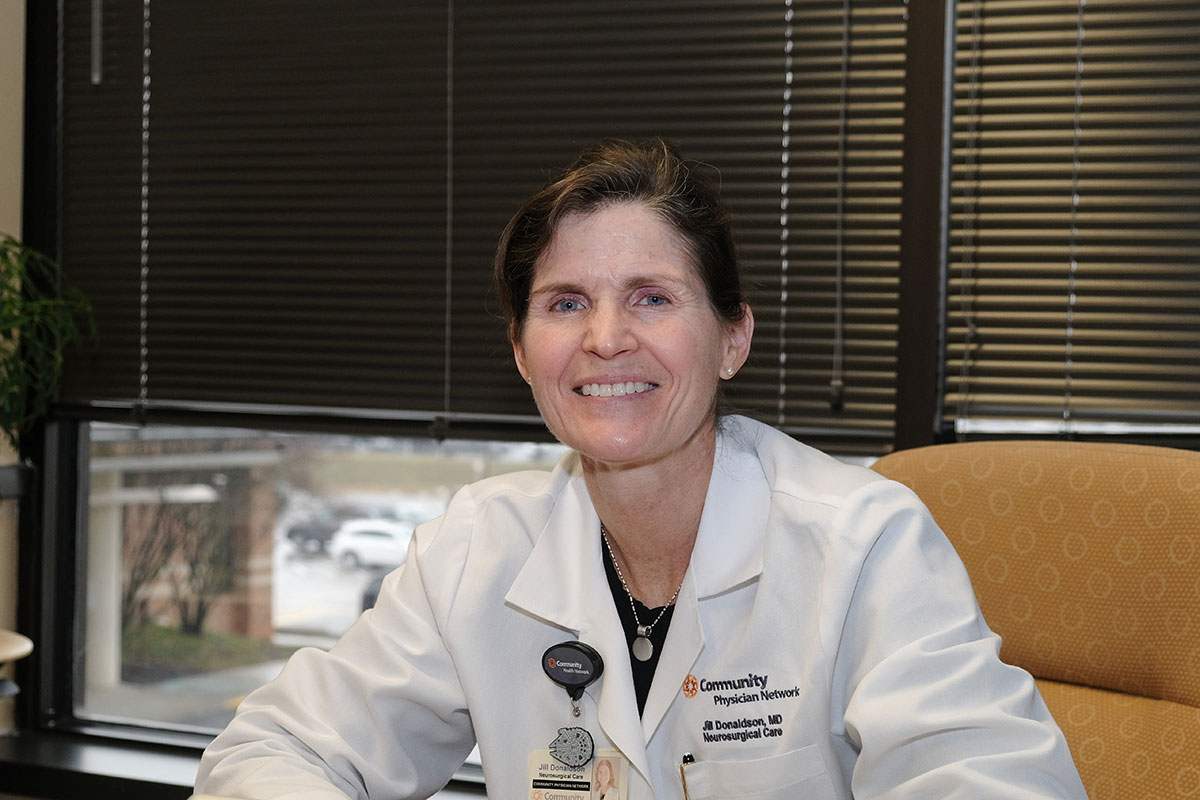Subscriber Benefit
As a subscriber you can listen to articles at work, in the car, or while you work out. Subscribe Now
Community Physician Network
Top honoree, Innovations in Health Care
Dr. Jill Donaldson, neurosurgeon with Community Physician Network, loves coming to work on Mondays. Really loves it.
She devotes that particular spot on her calendar to treating patients with a little-known but incredibly annoying and debilitating neurological disorder called essential tremor. And by “treating,” she means ending the problem, perhaps for years or even permanently, with a single painless, non-invasive procedure.
“A lot of these patients depend on their significant other or family to help them do things,” Donaldson said. “After treatment, they can do things by themselves again. They’re a really, really thankful group of people.”
Most common in people age 40 or older, essential tremor can cause involuntary shaking in pretty much any part of the body. However, it most commonly manifests in the hands, making everyday tasks like tying shoes, eating with a spoon and writing either extremely difficult or impossible. Concentrating on trying to complete a particular task can actually make the problem worse, as can stressing about the condition.
Though it can look superficially like Parkinson’s disease, there are typically no symptoms beyond shaking.
Donaldson has treated the problem for years with a technique called “deep brain stimulators.” This entails running an electrode to the portion of the brain responsible for the shaking and stimulating it with tiny jolts of electricity, similar to the way a pacemaker works. Alternatively, a wire can be run to the malfunctioning portion of the brain and heated, destroying the area and restoring proper motor function.
Both techniques work quite well, but they also involve drilling a hole in the skull and passing a fine wire deep into the brain. Recently, however, Donaldson became the first physician in Indiana to begin using a technique called MR-guided Focused Ultrasound, which eliminates the problem without making a single incision. The method first locates the problem area of the brain via magnetic resonance imaging, then uses focused ultrasound technology to heat up that tiny spot, putting it out of commission. Donaldson’s practice is only the 20th site in the United States to use MRgFUS.
It offers numerous other benefits beyond simply allowing patients to avoid invasive surgery. Because it uses ultrasound rather than radioactive materials to ablate the target area, there’s no danger from radiation. Donaldson can also precisely designate her treatment target by heating an area just enough to shut down the tremors but not destroy brain tissue. Once the problem area is located, it’s heated into permanent inactivity via ultrasound.
The patient remains awake and alert for the procedure. Indeed, the patient typically helps the medical team locate the exact spot that causes the tremors.
“We start pulling the patient in and out of the MRI scanner,” Donaldson said. “I hold a clipboard and they start writing, and then we can see their tremor gradually getting better. Most of the patients are super excited, and it’s really touching to be a part of that. It’s really a lot of fun.”
For approximately 90% of patients, the procedure provides immediate, near-total relief from essential tremor.
“A year after the procedure, about 90% of all patients still have really good tremor control, as do about 73% of patients after five years,” Donaldson said.
Since the majority of patients are in their 70s, that much tremor-free time can amount to a lifetime cure, or close to it.•
Please enable JavaScript to view this content.

Jill is such a great person and Dr, kudos to her for her diligence in this field!